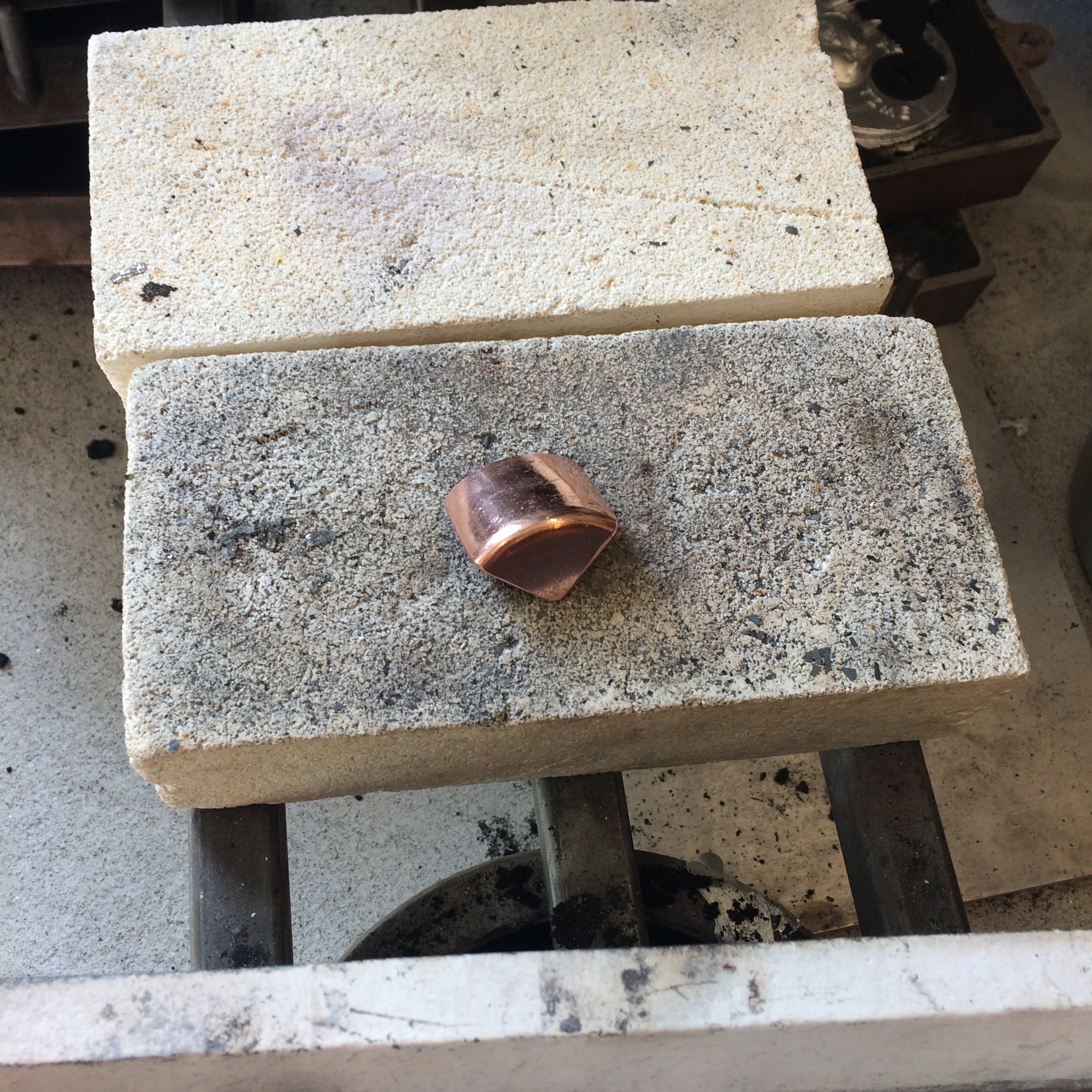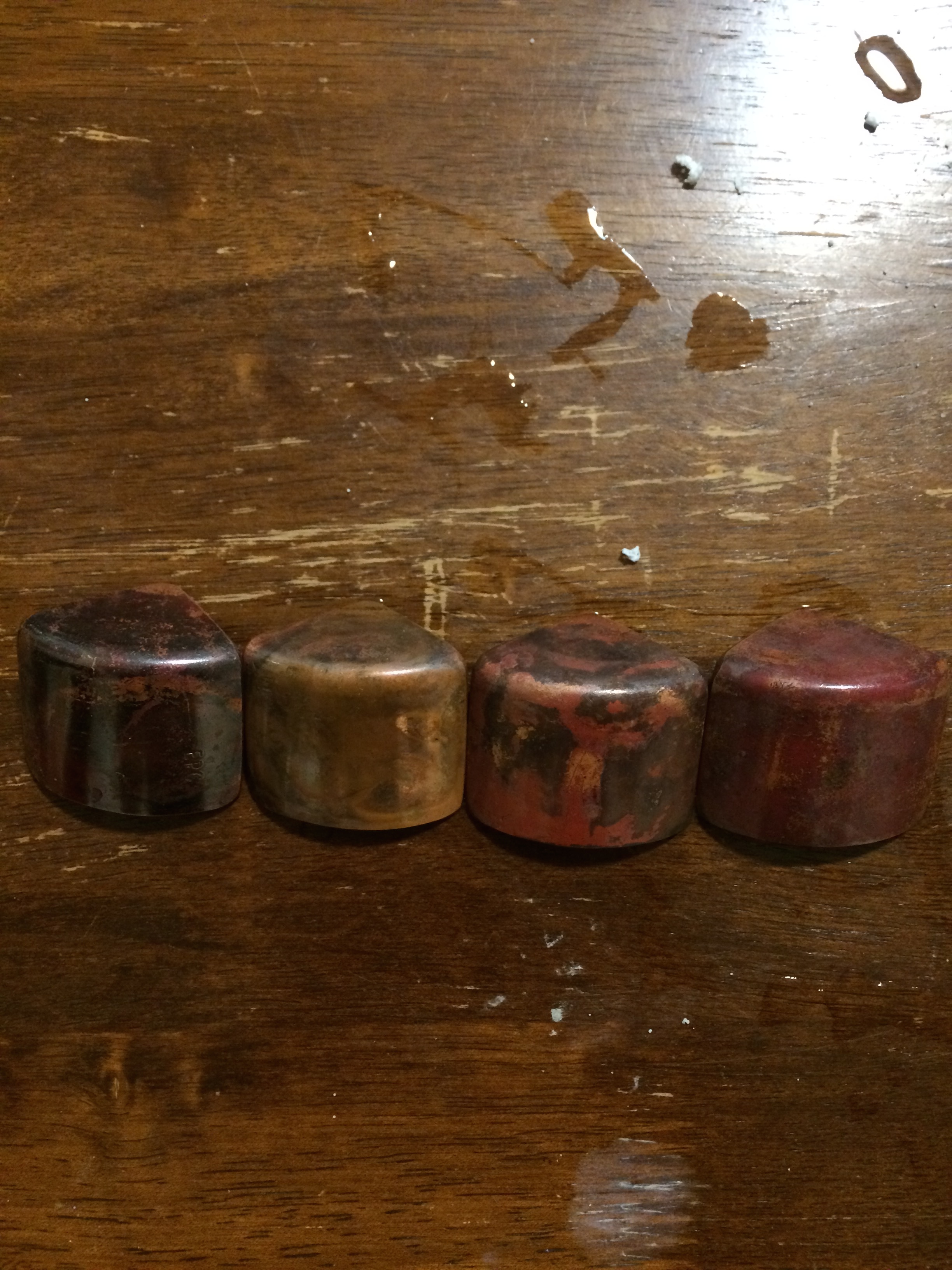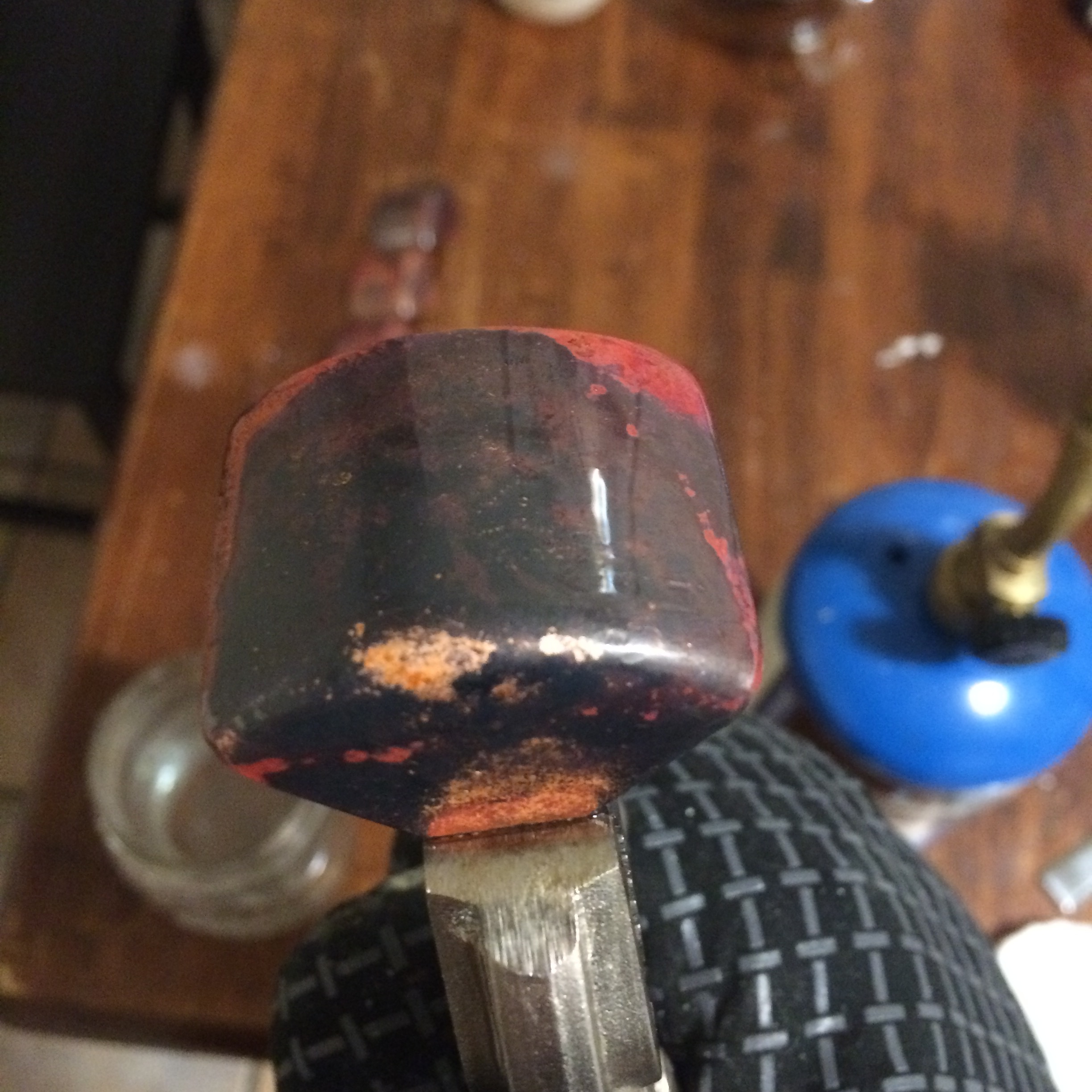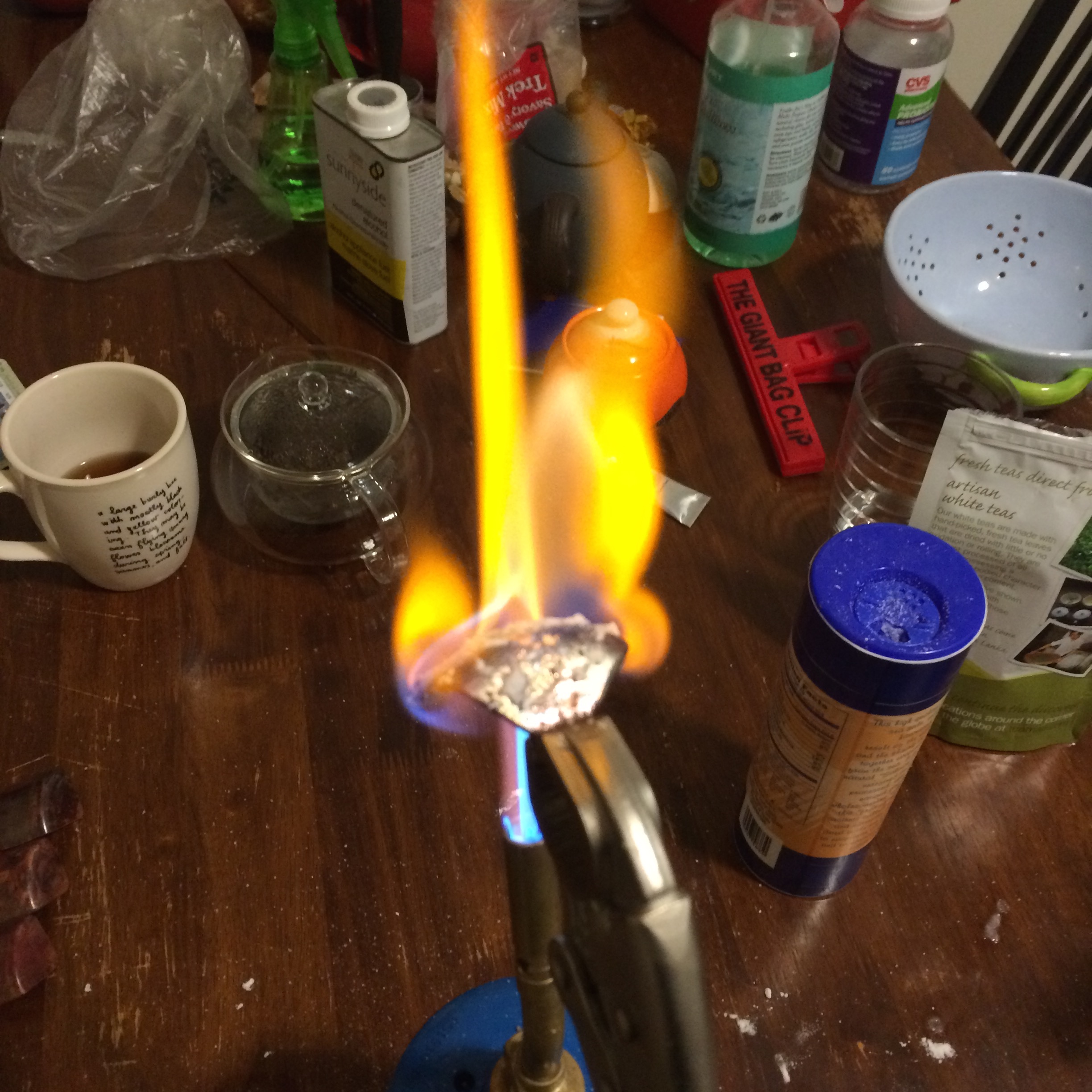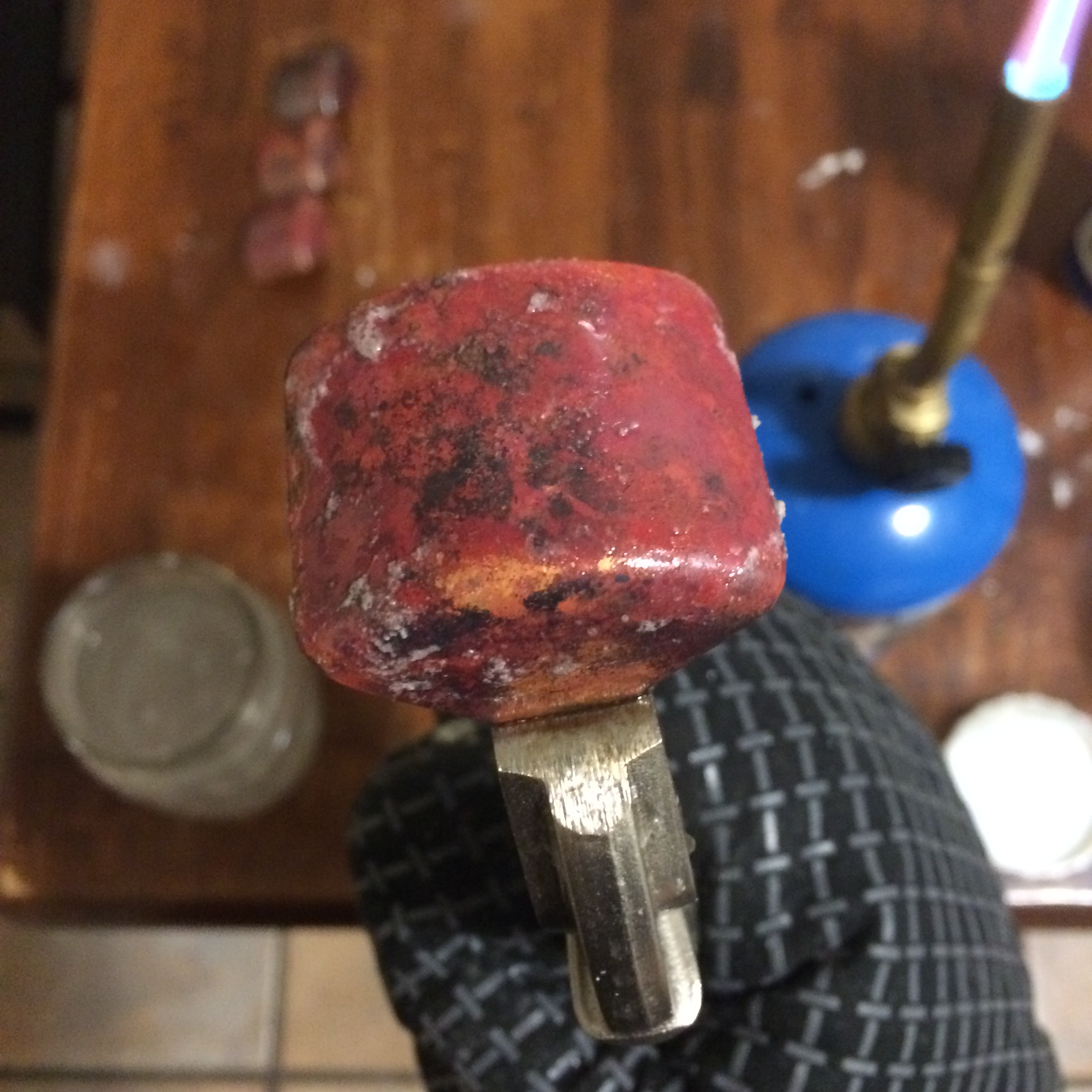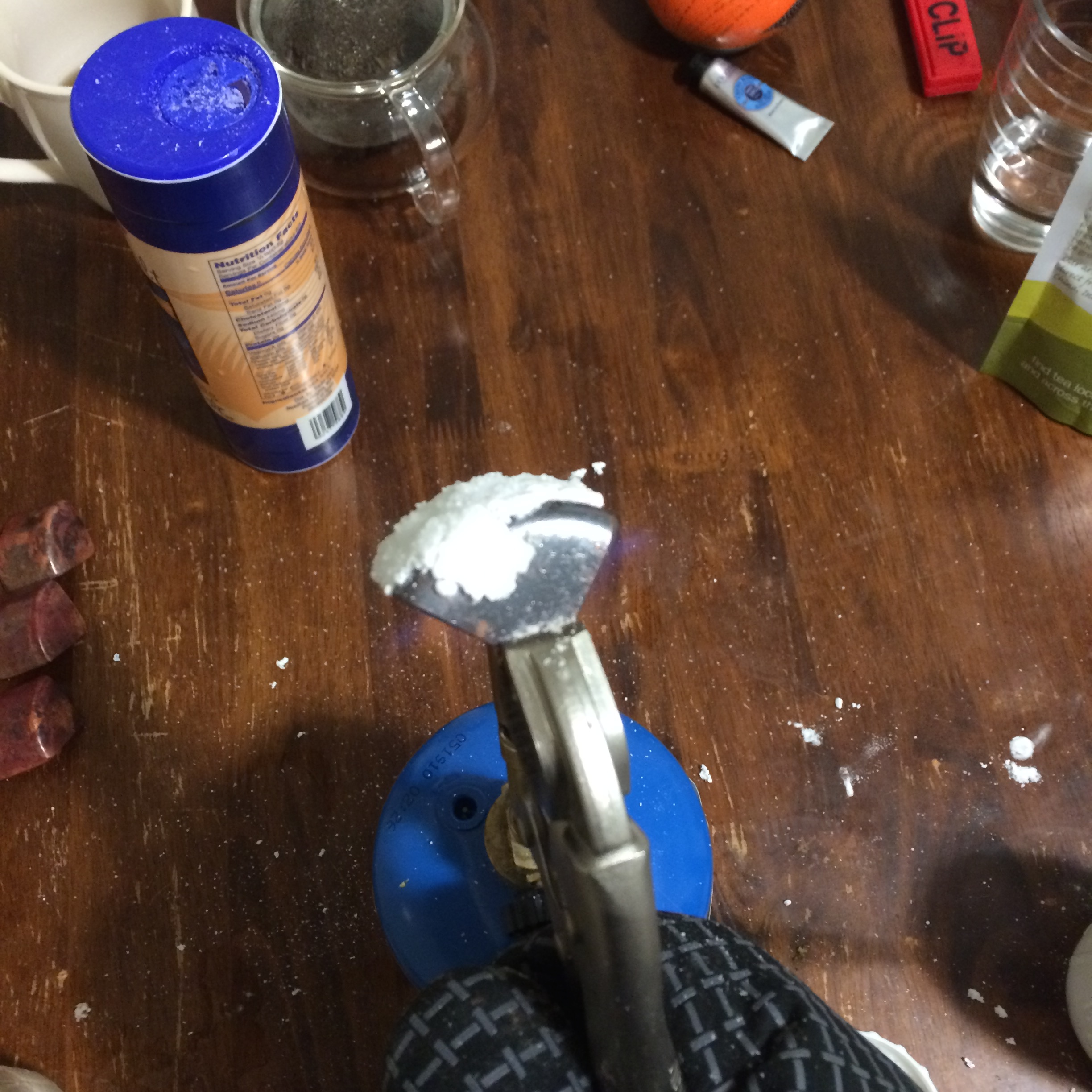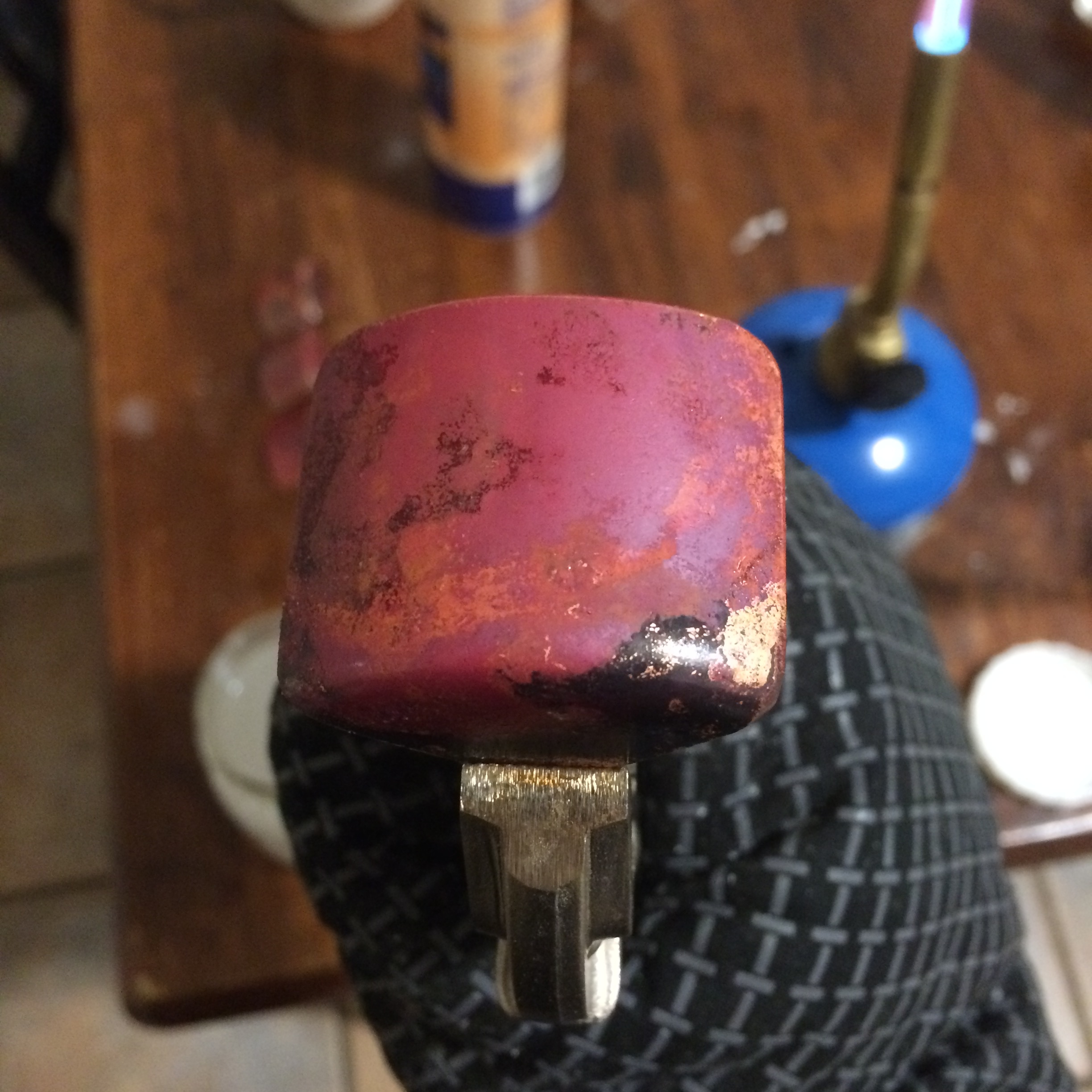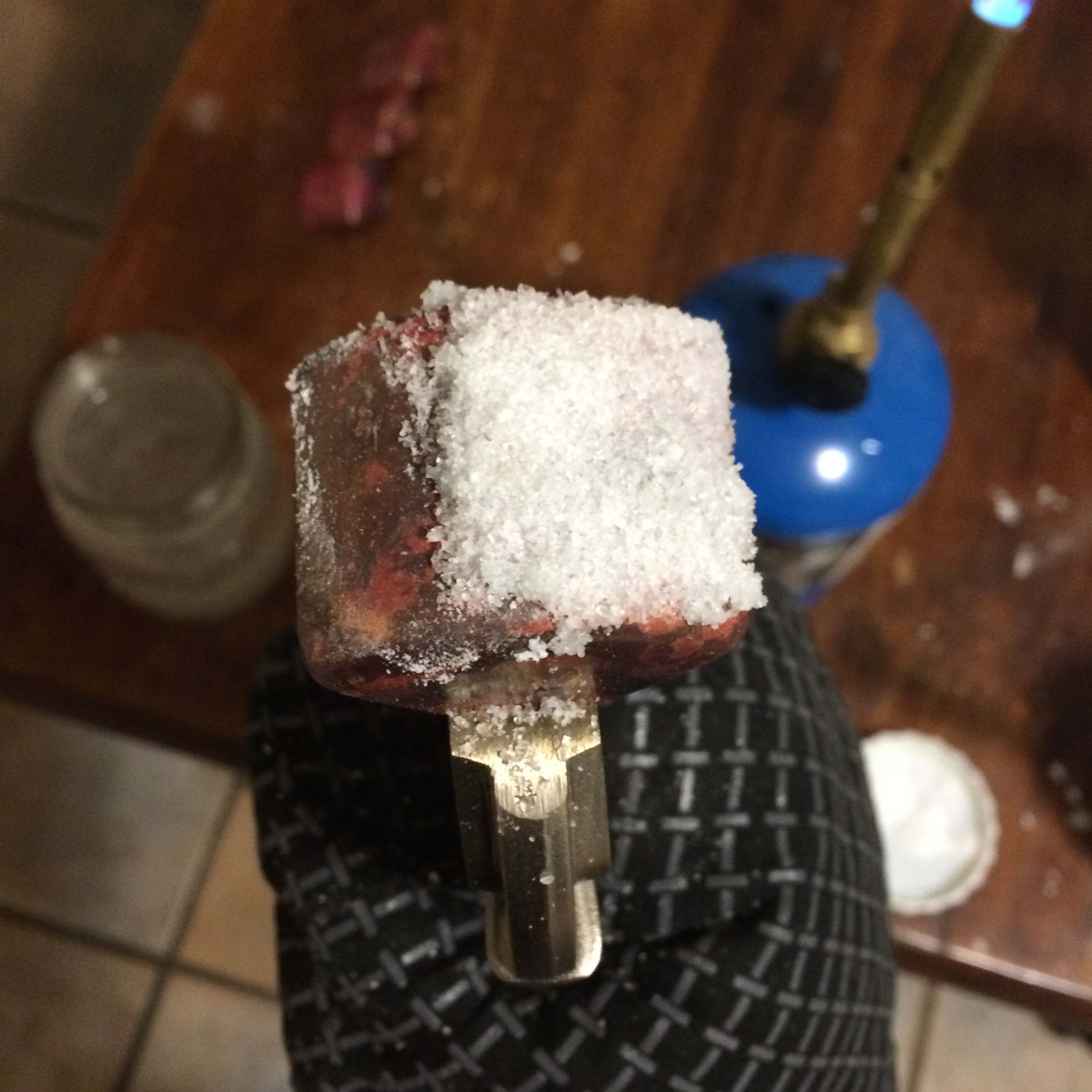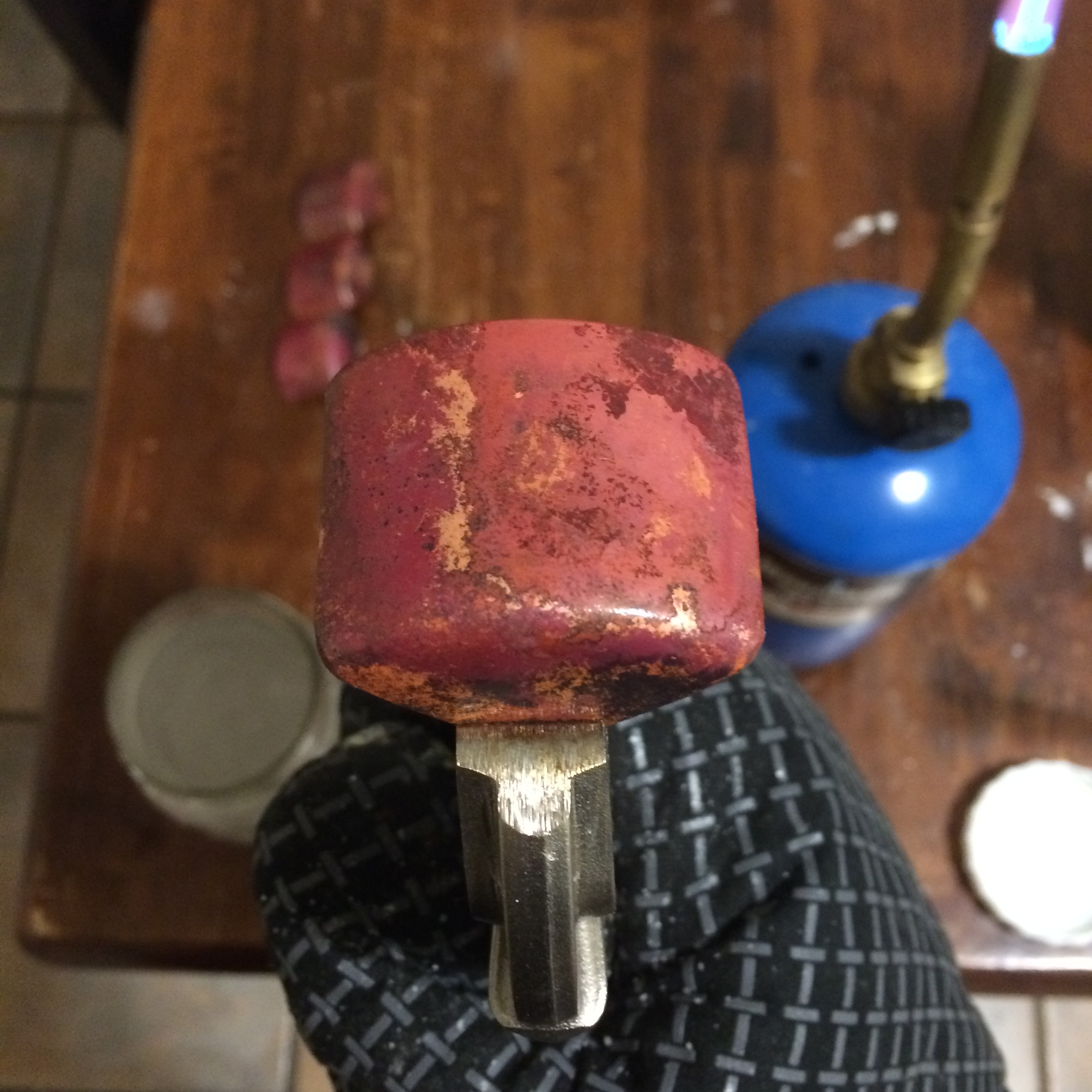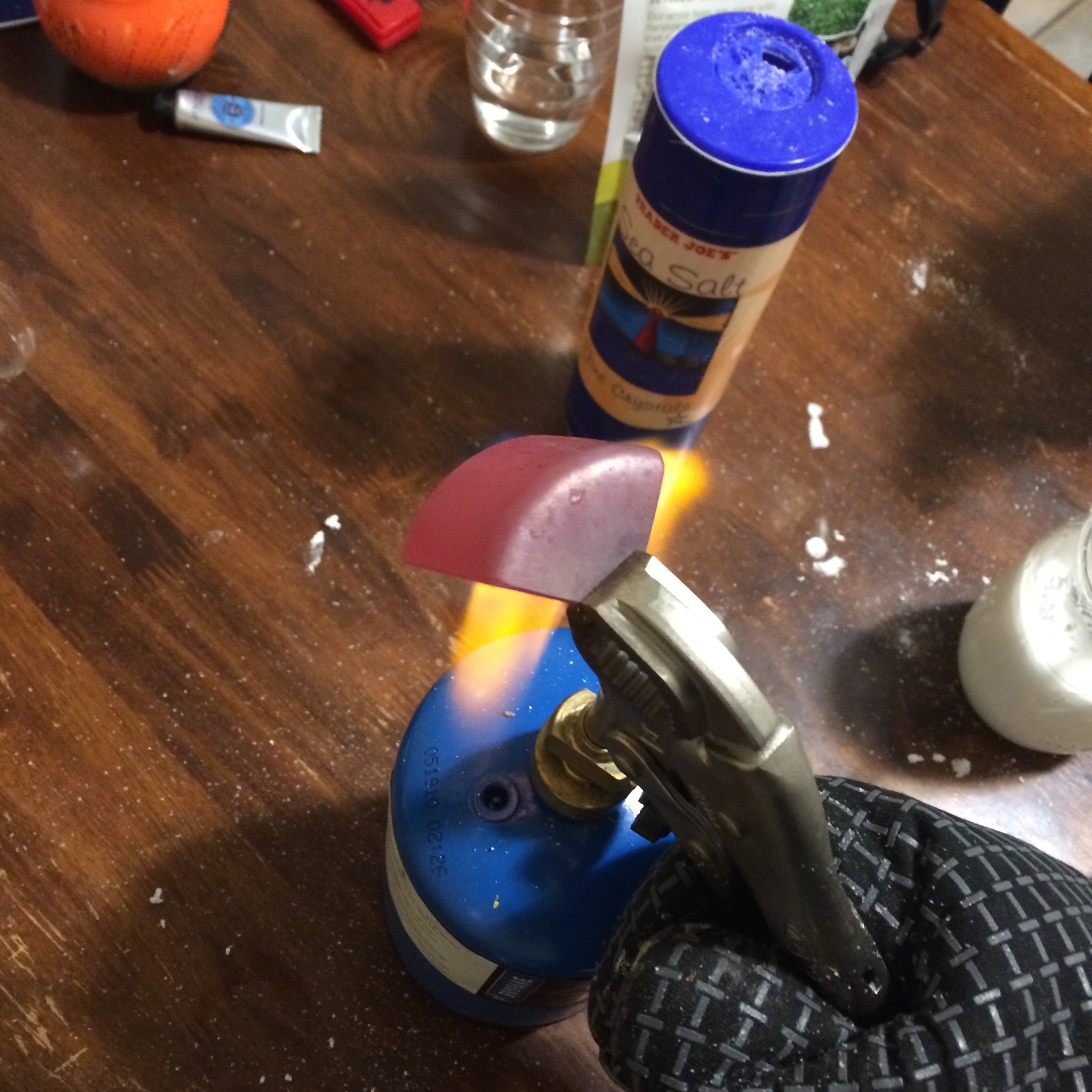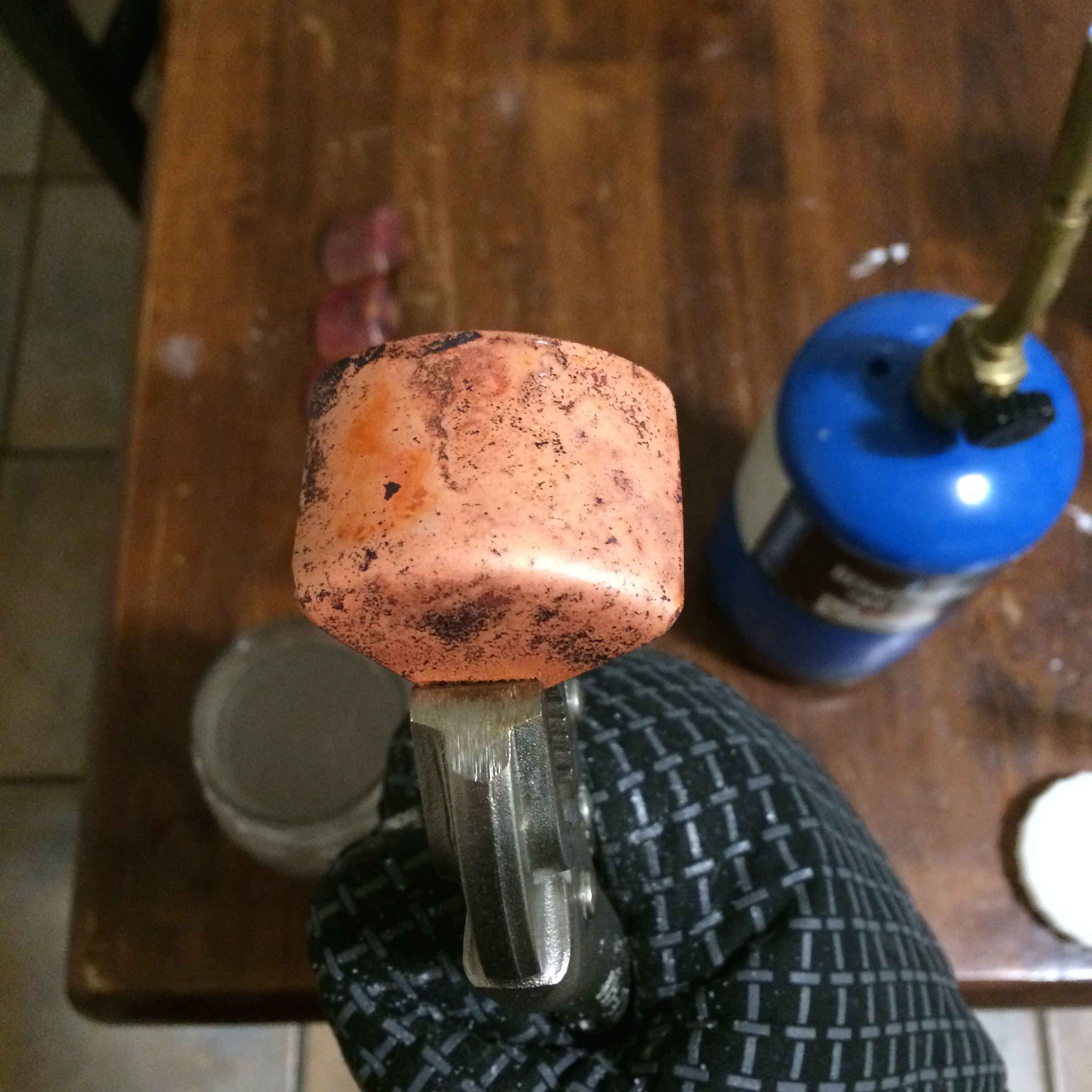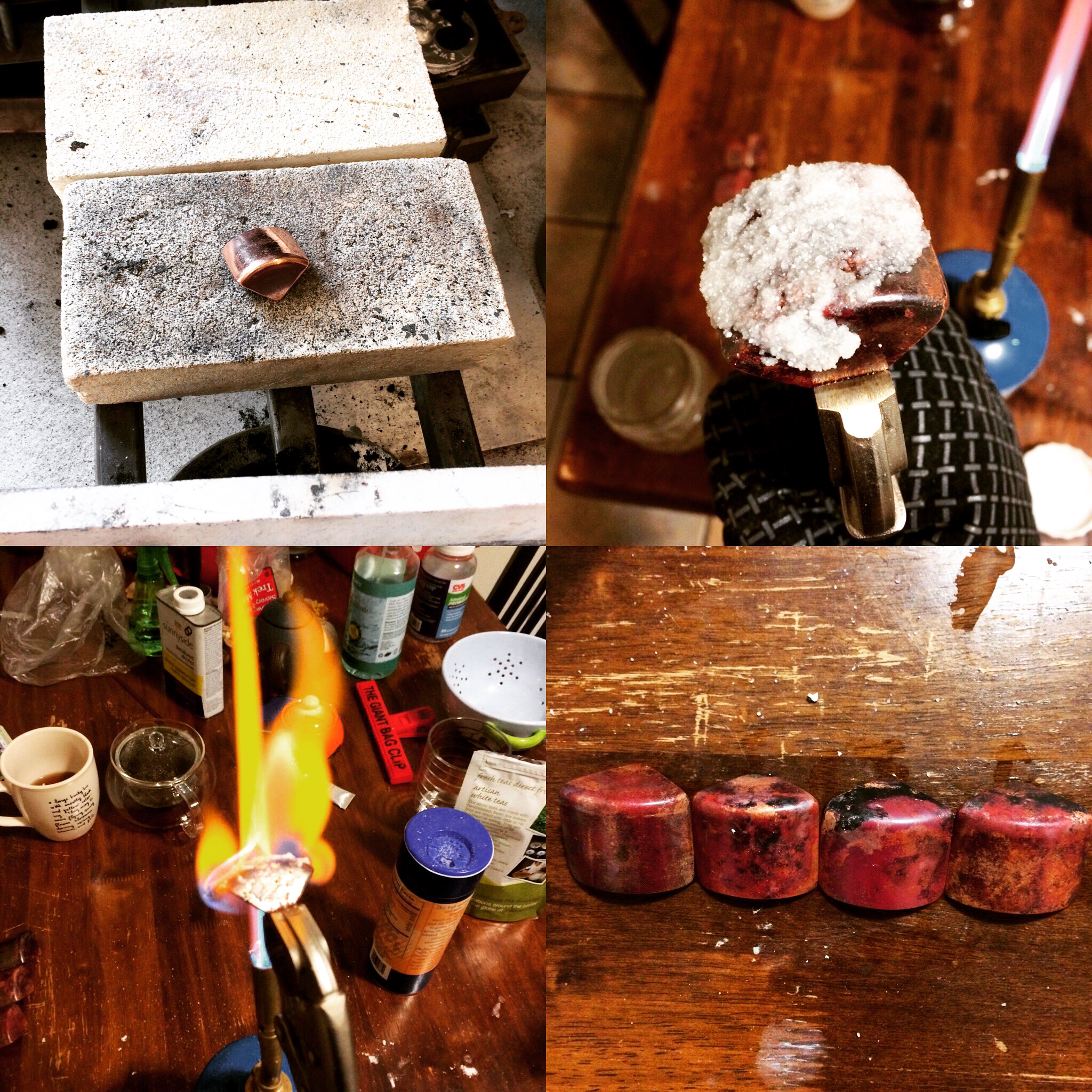When debating what material to make the locket out of, I learned of an interesting technique used by metal artists/jewelers to give their work pieces interesting colors. By heating the work, you are speeding up the chemical corrosion of the surface of the copper. You can also submerge the work in chemical solutions to achieve the desired reaction. Using a torch requires less overhead, so I'm going to see if I can get this to work.
The main problem with flame patination is creating/speeding up unwanted chemical reactions that may produce visual effects that interfere with the one you want. I'm still doing research to try and understand exactly what the red patina is, and how it's different than the black flaky firescale, which, as I understand, is also a type of oxidation reaction.
I tried making a traditional boric acid flux. Typically, the powdered boric acid crystals are dissolved in denatured alcohol or methanol to form a saturated solution. The work is then coated in this solution, and when the alcohol evaporates/burns off, a thin layer of boric acid crystals remains on the surface of the work. I didn't realize that boric acid was different than borax, and so the flux wasn't very effective, and heating the borax turned it into a weak brittle glass. Boric acid can be easily made from borax simply by reacting it with hydrochloric acid, so I may try that tomorrow.
Even without using the proper flux, I was able to get some decent purple-ish red colors. I will buff them tomorrow and see how they look, and try the flux as well. Then I'll need to figure out the best way to clear-coat them to protect the patina.
